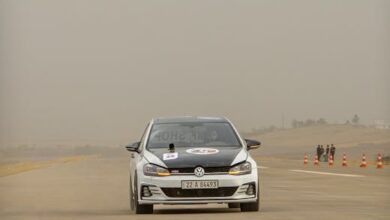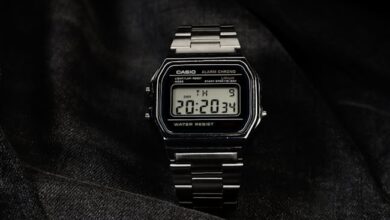San Francisco: The Unrivaled Proving Ground for Robotaxis
Remember that fleeting image from sci-fi movies, where cars drive themselves through bustling cityscapes, ferrying passengers effortlessly to their destinations? For years, it felt like a distant dream, perpetually on the horizon. But here in 2024, that horizon just got a whole lot closer, especially if you happen to be in San Francisco. Amazon-owned Zoox, a name that’s been synonymous with the pursuit of fully autonomous mobility, has just announced a pivotal step: they’re beginning to offer robotaxi rides to the public in the City by the Bay.
Now, let’s temper expectations just a touch. This isn’t a free-for-all, widespread commercial launch where you can hail a Zoox vehicle with a tap of your app tomorrow morning. Not yet, at least. Instead, it’s a controlled, incremental rollout – a carefully orchestrated dance that brings Zoox tantalizingly close to truly competing with established players like Waymo. But don’t let that nuance diminish the significance. This isn’t merely another internal test; it’s the moment their cutting-edge technology faces the ultimate real-world stress test: the discerning, unpredictable public.
For those of us who’ve been watching the autonomous vehicle (AV) space with bated breath, this is more than just news; it’s a tangible marker of progress. It signifies that the years of research, billions of dollars invested, and countless hours of simulated and real-world testing are truly paying off. The future of urban transportation isn’t just coming; it’s already started its engines, silently cruising through the iconic streets of San Francisco.
San Francisco: The Unrivaled Proving Ground for Robotaxis
Why San Francisco? If you’ve ever driven, biked, or even walked its famously hilly, fog-laden streets, the answer becomes immediately apparent. This city is an urban planner’s delight and an autonomous vehicle developer’s nightmare – a beautiful, chaotic mosaic of challenges that push AV technology to its absolute limits. Anyone who’s navigated the tight turns of Lombard Street, dodged a cable car, or found themselves gridlocked at the approach to the Bay Bridge knows what I mean.
San Francisco presents an unparalleled gauntlet: unpredictable pedestrians darting across intersections, cyclists weaving through traffic, double-parked delivery trucks, complex four-way stops, and the infamous microclimates that can transition from bright sunshine to dense fog within a few city blocks. For a self-driving system, processing and reacting to this constant, dynamic flux isn’t just an engineering challenge; it’s a high-stakes masterclass in real-time decision-making.
By choosing SF as its proving ground, Zoox isn’t just showing confidence; they’re embracing the very environment that will forge the most robust, reliable driverless system. Every unexpected swerve, every sudden brake light, every unique traffic signal configuration collected during these public rides becomes invaluable data, feeding into the AI’s learning algorithms. It’s a baptism by urban fire, designed to harden the software and sensors for whatever the real world can throw at them.
Learning from the City’s Pulse
The city’s diverse population and intricate infrastructure also offer a rich tapestry of interactions. A Zoox robotaxi will encounter everything from tourists mesmerized by Alcatraz to busy tech workers rushing to meetings, each presenting unique behaviors and expectations. This exposure is critical for refining the vehicle’s “social intelligence” – its ability to predict human actions and interact safely and courteously in a shared urban space.
It’s a testament to Zoox’s engineering prowess that they feel ready to introduce this experience to the public, even in a limited capacity. They’ve clearly logged countless miles and refined their perception, prediction, and planning stacks to a point where they believe their vehicles can navigate this complexity not just safely, but smoothly.
What This Means for Zoox (and the Broader AV Landscape)
This public debut, even if carefully managed, carries immense weight for Zoox and ripples across the entire autonomous vehicle industry. It marks a significant shift from the relatively controlled environment of employee-only rides to the far more scrutinized arena of public perception and experience.
Moving Beyond Internal Testing
Before this, Zoox has primarily been transporting its own employees around its campuses and within designated operational design domains. While crucial for internal development and iterating on the tech, these rides don’t fully replicate the varied demands and subjective experiences of a true public service. Inviting the public, even a select group, provides critical feedback not just on safety and performance, but on the overall user experience – comfort, communication, perceived reliability, and the myriad small details that make a ride enjoyable or frustrating.
Think about it: no steering wheel, no traditional front or back seats – Zoox’s purpose-built vehicle design is radical. Getting real-world feedback on how the public interacts with this unique form factor is invaluable. Are passengers intuitively comfortable? Does the interface feel natural? These are questions that can only be answered when real people, with no prior biases, step inside.
A Strategic Gambit Against Waymo
The elephant in the room, of course, is Waymo. Google’s self-driving subsidiary has been operating commercial robotaxi services in Phoenix for years and recently expanded its public operations in San Francisco and Los Angeles. They have a significant head start in terms of operational experience and public recognition. Zoox’s move is a direct statement of intent: they are ready to join the fray.
Backed by Amazon, Zoox has deep pockets and a long-term vision. Their unique, purpose-built “carriage-style” vehicle, designed from the ground up for autonomous ride-hailing rather than retrofitting an existing car, represents a fundamentally different approach. It emphasizes passenger experience, bi-directional travel, and maximizing interior space. This distinct design could be a key differentiator in a competitive market.
While Waymo focuses on traditional vehicle form factors, integrating their tech, Zoox is betting on a reimagined cabin experience. This limited public launch allows them to fine-tune that experience, gather crucial data points, and begin to carve out their niche in a market that will eventually be defined by both safety and superior user interaction.
The Road Ahead: Building Trust and Shaping Urban Mobility
This initial public offering of Zoox robotaxi rides isn’t just about technological prowess; it’s fundamentally about building trust. Autonomous vehicles are still met with a healthy dose of skepticism by a segment of the public, and rightly so. High-profile incidents, no matter how rare, tend to dominate the narrative. For Zoox, every safe, smooth, and reliable ride during this phase is a deposit into the public trust bank.
Building Public Confidence, One Smooth Ride at a Time
Safety will remain paramount. The rigorous testing, the redundant systems, and the constant monitoring are all designed to ensure a level of safety that meets, and eventually surpasses, human driving. But safety alone isn’t enough; the vehicles must also instill confidence. Passengers need to feel comfortable, relaxed, and secure in a car with no driver. This is where the subtleties of smooth acceleration, precise braking, and clear communication from the vehicle become critical.
Regulatory hurdles also loom large. While this phase is non-commercial, full-scale commercial deployment requires navigating complex and evolving regulatory frameworks at local, state, and federal levels. Each successful public ride, each positive passenger experience, provides valuable data and anecdotal evidence that can help inform and influence future policy decisions, paving the way for broader adoption.
A Glimpse into the Future of Urban Travel
Ultimately, the vision for companies like Zoox extends far beyond simply offering a novel way to get around. They envision a future where autonomous vehicles dramatically reduce traffic congestion, minimize pollution, and provide accessible, affordable transportation for everyone. Imagine a city where parking garages are repurposed, where road accidents are dramatically reduced, and where mobility is no longer a barrier for the elderly or those with disabilities.
Zoox’s public debut in San Francisco is more than a company milestone; it’s a significant marker in humanity’s journey towards a more intelligent, efficient, and potentially safer urban landscape. It’s a testament to the relentless innovation that continues to reshape our world, one silent, self-driving ride at a time.
While the path to fully autonomous widespread commercial deployment is still a marathon, not a sprint, Zoox has just taken a crucial, confident stride forward. It invites us all to imagine a future not so far away, where hopping into a driverless robotaxi is as common and unremarkable as calling a traditional rideshare today. The wheels of progress are indeed turning, and they’re doing so, quite literally, on their own.





